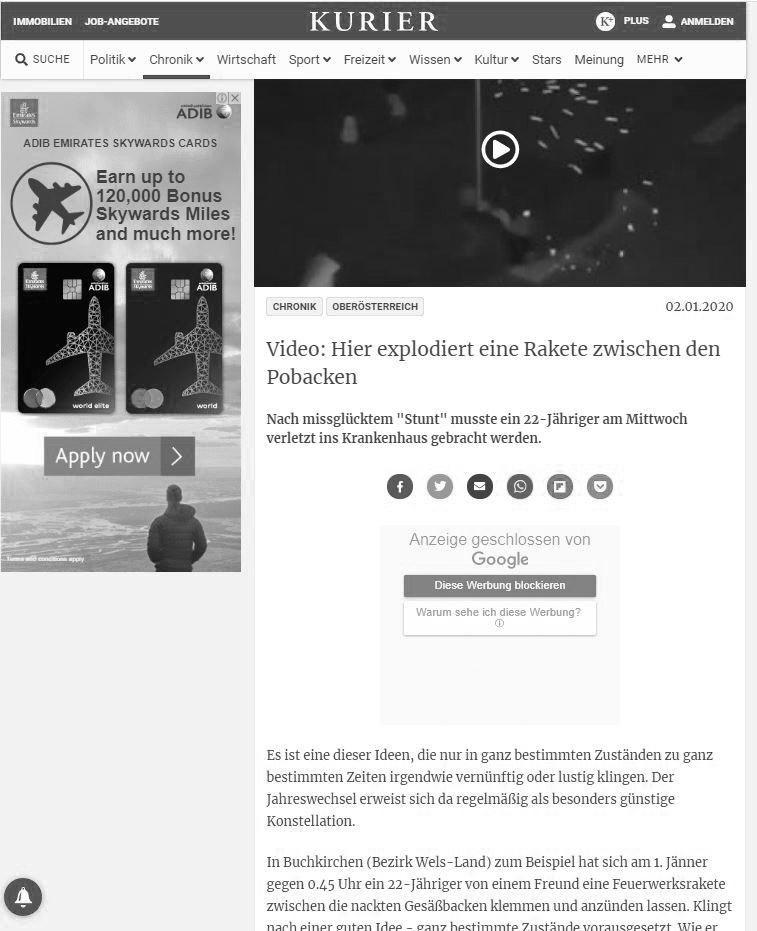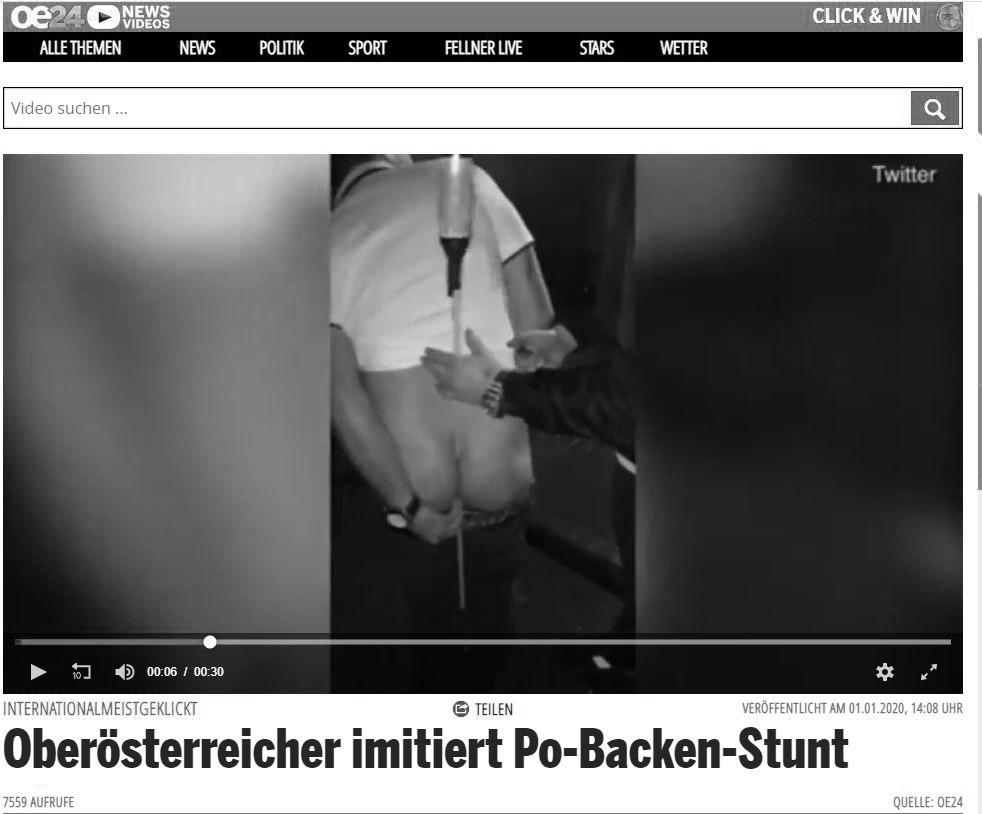A drunk Austrian reveller who decided to launch a firework by placing it between the cheeks of his bottom and who was hospitalised with severe burns over the New Year provided an opportunity for click bait in local media.
Although the story was no doubt a good top line for the coverage of the New Year’s celebrations, it was one that needed a photograph or even better, a video, and Austrian tabloid Oesterreich seem to score a scoop when it published a spectacular video of a man standing outside a house with his trousers down as the firework was placed between the cheeks of his bottom.
He then ran off as the flames from the rocket scorched his back and bum, and seconds later it exploded, showering sparks across the courtyard before the video ended.

The headline and sub headline proclaim “22-year-old Badly Injured” followed by “The Rocket Exploded Between Man’s Bum Cheeks”. It then goes into the details of what happened involving the young man in the early hours of January 1 who took part in the drunken stunt at a party in Austria’s Buchkirchen community near Wels in Upper Austria.
It references the fact that because he was nervous, he clenched his bottom together, meaning he held onto the rocket to tightly, which was then unable to launch and instead blasted a flame onto the man’s rear and back.
Only in the last paragraph of the story does the author of the story admit that the video is actually nothing to do with the incident, writing: “The young Austrian probably got the idea from a video that’s been circulating on the net since November in which a man celebrating bonfire night puts a rocket up his bottom.”
Many people who clicked on the article simply to see the video no doubt did not read this far, and would have believed it to be the incident referred to in the headline, sub headline and first part of the story.

But not to be outdone, other Austrian media went a stage further when they discovered a YouTube video that currently has 200,000+ views and claims to be the real incident, and it was quickly republished on the daily newspaper Heute’s web portal as well as the respected left-leaning Kurier, and the web only news portal Vienna.at.
The only problem, this video was even older, having first been published on the web some two years previously. A brief check found it even made itself into the world’s biggest online newspaper, the MailOnline, as well as many other places.

Heute has the headline: “Video shows how rocket in man’s bottom explodes” followed by the video caption: “Test of courage? Seen too many YouTube videos? It’s not clear. Fact is: A 22-year-old man in Wels who poked a rocket up his bum made a bad decision. It exploded.”
The next paragraph confirms that the video shows the bad idea from this year’s New Year’s eve celebrations saying it “shows the stupidest idea from this year’s New Year festivities.”
Kurier uses the same video under the headline: “Video: Look here to see how a video explodes between man’s butt cheeks.” followed by the first line saying: “After the accident, a 22-year-old who was injured was taken to hospital.”

And Vienna.at had simply posted the Austrian press agency text underneath the video that had the caption with three ‘scream’ emojis saying: “Rocket explodes in man’s backside in Wels in Upper Austria.”
In the reader’s comments, nobody seems to have realised the video is old news.
In a busy newsroom, with journalists under pressure to produce content that brings online clicks, mistakes like this are easy to make. The reporter who first saw this felt it was simply too good an opportunity to miss and took it at face value. From there it had the stamp of approval that saw it shared and republished across the web.
All three media sites might be able to distance themselves from the video by pointing out that they have embedded it from YouTube, but the text they have put around it gives the video the credibility which has driven traffic to the report. In the age of so much fake news, real news sites like the three above would do well to protect their reputations more before claiming to be offering genuine insights into news no matter how ludicrous.

Kurier also drove traffic to the fake video by indicating to readers that it was the more recent event.



